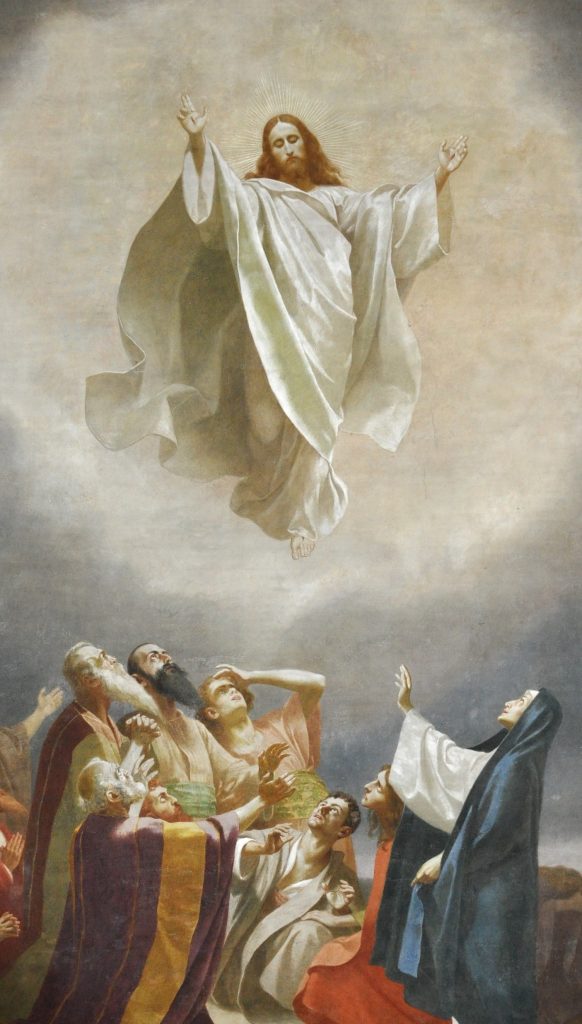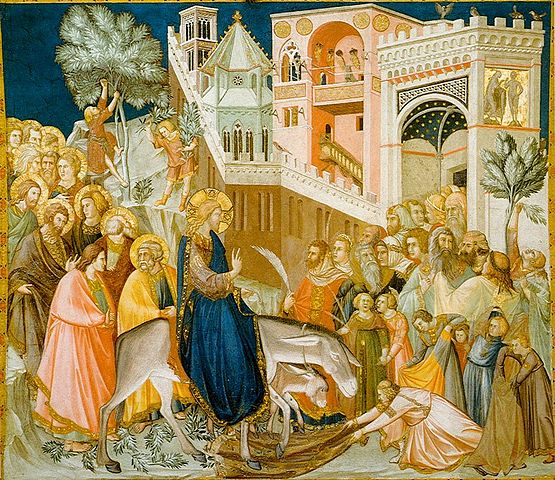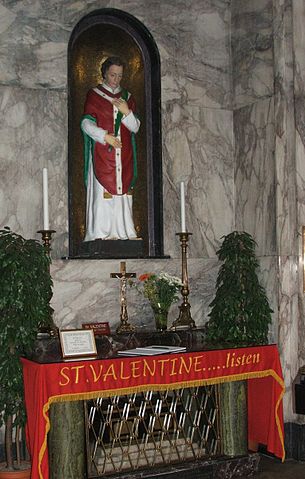
1893/1894
Public Domain via Wikimedia Commons
For most Christians and the Roman Catholic Church, today is Ascension Sunday when Jesus ascends into Heaven. The word ascension has a different meaning when applied in a religious context. Ascension is generally defined as ascend, or to go up. For instance, you ascend stairs, or you ascend a mountain path. Or it could be used to denote moving up to higher job level (he ascended to company president after the retirement of the previous one). Ascension in Judaism though means going to Heaven either without having to die first or after dying. In Jewish scripture, Elijah was taken directly to Heaven. The same applies to Enoch (Noah’s great-grandfather) as it appears from the text this happened as well.
In the case of Jesus, according to Christian teaching, he died and was resurrected. He then spent 40 days with his disciples. On the 40th day, he and the disciples went to Mount of Olives near Bethany and was also near Jerusalem. Only two gospels-Mark and Luke-record this event while the other two (Matthew and John) don’t though John does reference it. It is also recounted in the first chapter of Acts of the Apostles. The event was accepted by the early Church and also referenced in the Epistles. The traditional site (Mount of Olives) had a church built upon it in the Fourth century but was destroyed and rebuilt numerous times. The current structure is the Chapel of the Ascension and is easily discerned by its octagonal shape. It is considered a holy site by both Christians and Muslims.
Traditionally Ascension Day is held 39 days after Easter Sunday, so it falls on a Thursday. The Orthodox Church uses the Julian calendar, so it is not celebrated at the same time as the Western Christian churches. Check out the liturgical calendar from the Holy Trinity Russian Orthodox Church for more information. Ascension Day is a day of obligation meaning church attendance is required. Usually as part of the service, the Paschal candle that was lit on Easter will be extinguished to symbolize Jesus departure from earth. In some Catholic and Lutheran countries, it is a public holiday (Austria, Belgium, Denmark, Finland, France, German, Luxembourg, the Netherlands, Norway, Sweden, and some cantons in Switzerland). Ascension Day is not celebrated in the United Kingdom, United States, or Australia. Some Christian denominations may not mark it for celebration on Thursday and move it to Sunday.
For many years the Roman Catholic church celebrated it on Thursday, but that is no longer always the case. Back in the 1990’’s there was a movement in the United States (starting out on the West Coast) that started moving the day to the nearest Sunday. The movement to move mid-week holy days of obligation had been going on for some time already in the church. The reasons were both practical and spiritual. Since many people work during the week, they cannot always get to church. And by moving some holy days of obligation to Sunday, it will allow that important solemnity to be more widely celebrated. Many countries in Europe and elsewhere now have dioceses that have moved Ascension Day to Sunday. The Vatican now allows (with permission from the Holy See) each countries bishop conference to move some holy days of obligation to Sunday. The United States Conference of Catholic Bishops now allows Ascension Sunday to take place on the 7th Sunday of Easter. However, dioceses that wish to observe on Thursday can do so. Currently the archdioceses and dioceses of Boston, Hartford, New York, Newark, Omaha, and Philadelphia are the only ones in the United States that celebrate Ascension Day on Thursday.
Sources:
Pope, Msgr. Charles. “Ascension Sunday: The Lord ‘Taken up Into Heaven.’” NCR, 10 May 2024, www.ncregister.com/features/ascension-sunday-the-lord-taken-up-into-heaven.
Boelke, Rob. Why Do We Celebrate the Ascension on a Sunday? | Sacred Heart Catholic Church. 6 May 2024, sacredheartfla.org/2024/05/06/why-do-we-celebrate-the-ascension-on-a-sunday.
Rees, Neil. “What Is Ascension Day and Why Do We Celebrate It?” Christianity Today, 9 May 2024, www.christiantoday.com/article/what.is.ascension.day.and.why.do.we.celebrate.it/141704.htm.



